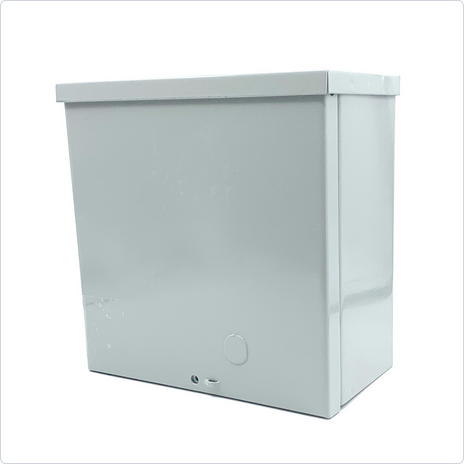
Access Products Fire Strobe 2000 FSC2000
Access Products Fire Strobe 2000 FSC2000
The system allows for rapid access to automatic gates and secured areas by opening a motorized gate when activated by an emergency vehicle equipped with a standard Opticom-type operational strobe. It is fully digital and compatible with the Opticom priority control emitter. Additionally, it responds to both high and low priority outputs of the Opticom and Strobecom II emitters, especially when set in Strobewatch mode.
INSTALLATION INFORMATION
Site Inspection for Installation
Carefully inspect the area where the Fire Strobe 2000 will be installed. Proper placement of the photoeye assembly is necessary for optimum performance. The photoeye assembly must be mounted on a structural post to accommodate the height requirement of approximately 8 to 10 feet. The post should be strong enough to prevent accidental movement of the photoeye assembly after installation. Avoid conflicts with buildings and trees that can obstruct the photoeye assembly. Consider the approach if it is on a hill; the detector should be mounted accordingly. Do not aim the photoeye detector in direct sunlight, as this can temporarily blind the system. Use the furnished PVC hood to help shield the photoeye from sunlight. Note the direction from which emergency vehicles will arrive; if they arrive from two directions, use two photoeye detector heads for bi-directional coverage.
Photoeye Assembly Post
Fabricate and install a 2-inch by 2-inch by 8-foot mounting post. Attach the provided PEA assembly to the top of the post using two screws. Do not glue the assembly, as you need to aim the photoeye assembly in the direction of approaching emergency traffic. Once aimed, remove the assembly and complete the wiring as described below.
Mounting the Cabinet
We suggest mounting the control cabinet directly below the post, possibly inside the wall or fence line, to help prevent vandalism. Remove the circuit board from the unit by unscrewing the four screws and solder lug. Discharge any static before handling the board. Determine which of the two openings in the box will be used for wiring into the cabinet. Run the wires through a half-inch conduit into the bottom opening of the cabinet. Carefully remove the knockout plug from the chosen opening. Securely mount the unit, pull the necessary cables into the cabinet, and remount the circuit board.
Pulling the Cables
Pull four cables to the control box: 1) an 18 AWG, 2-conductor cable for the power supply; 2) an 18 to 24 AWG, 2-conductor shielded cable for the photoeye assembly (do not use multi-conductor shielded cable); 3) an 18 AWG, 2-conductor cable to connect to the gate operator; and 4) a 14-gauge ground wire.
Making Connections
On the photoeye assembly, remove the terminal block from the three-pin connector at the bottom of the circuit board and connect it to the 2-conductor shielded cable as follows: #1 Shield, #2 SIG, #3 GND. Connect the shield of the photoeye assembly to the green ground wire on the PC board, which must be attached to earth ground. Reinstall the terminal block on the pins. For AC power, connect the other end of the cable to the provided 12 VAC transformer, but do not plug it into a 110 VAC outlet yet. For DC power, connect the cable to a 12 VDC power supply with its own charging circuit, and do not plug in the transformer yet. Remove the terminal block from the three-pin connector on the circuit board and connect it to the shielded cable according to the scheme: #1 PHOTOEYE DETECTOR (IN1 and GND), #2 PHOTOEYE DETECTOR (IN2 and GND). Ground the enclosure thoroughly to protect static-sensitive components, connecting to the lug on the lower right stanchion. Plug in the 12 VAC transformer or the 12 VDC power supply into a 110 VAC outlet; the red D6 LED on the circuit board will light up when power is applied.
Relay Configuration
The system has dual relay outputs with common, N/O, and N/C terminals for connecting to the gate controller. The maximum rating for the Fire Strobe 2000 relay is 500 mA at 24 VAC. Remove the relay terminal block from the six-pin connector at the bottom right corner of the circuit board and connect your common, N/O, and N/C gate controller input to these terminals. The acquisition delay time before operating the relay can be set using the switches: SW1=off SW2=off gives 500 milliseconds; SW1=on SW2=off gives 1 second; SW1=off SW2=on gives 1.5 seconds; and SW1=on SW2=on gives 2 seconds. Note that these times are nominal at 14 Hz or 840 flashes per minute. There is a new feature, #3 on, called STROBEWATCH, which allows the Fire Strobe 2000 to look for both the Opticom emitter and the STROBEWATCH. If you experience false inputs, turn #3 off. To set the relay hold-on time, set dip switch SW1 as follows: #4 on for 30 minutes, #5 on for 12 minutes, #6 on for 6 minutes, #7 on for 1.5 minutes, and #8 on for 6 seconds. An operational test should be performed to ensure proper gate operation. Aim an operational strobe light at the photoeye detector assembly, ensuring the strobe frequency is set to 840 flashes per minute. The D2 LED will blink as the strobe light is activated and lock on when synchronized. The D4 LED will light up when the relay is activated. It is recommended to contact your local fire department for a complete system test, and the system should be tested monthly.
